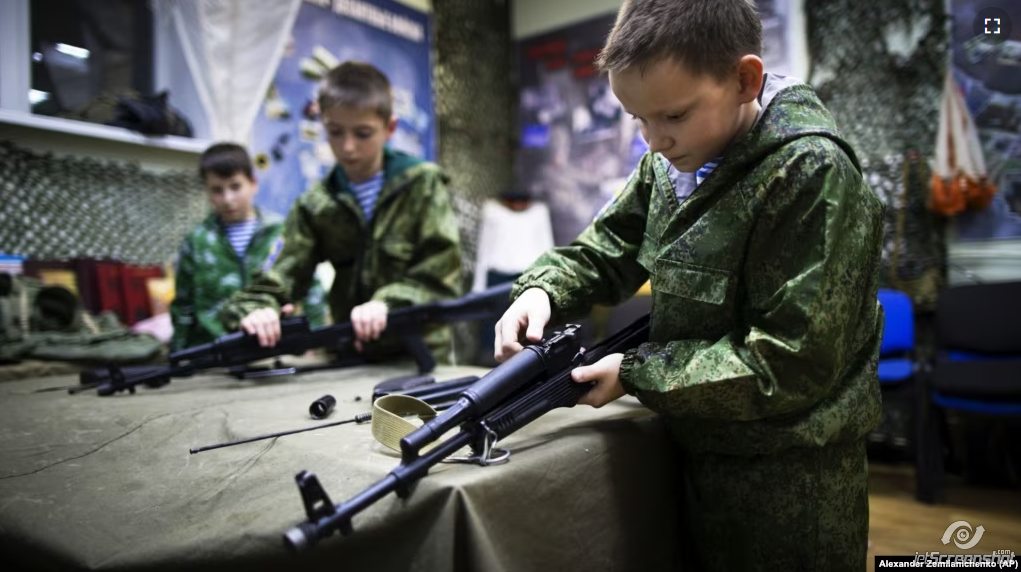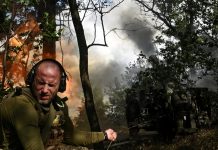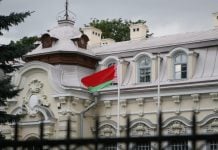By Kseniya Kirillova, for CEPA
With no end in sight to Russia’s war of aggression, the regime is stepping up efforts to train the next generation for war
Propaganda clearly works in forming opinion among Russia’s population, but studies indicate that participation in Kremlin-inspired organizations has a stronger impact on the decision to enlist for frontline service than even the most aggressive media appeals.
Researchers Natalia Savelyeva and Svetlana Yerpyleva published an article in October in the journal Sociological Forum. The authors conducted interviews with residents of the Russian-controlled part of the Donbas region among those who took up arms against the Kyiv government in 2014. The study aimed to understand what motivated ordinary civilians to become involved and whether there was a predisposition influencing their choices.
The authors identified five socially conditioned groups involved in the conflict. Among Donbas residents, two categories stood out. First, there are the ordinary citizens, often with high levels of educational achievement, who began participating in the activities of the Anti-Maidan “mobile brigades” protecting their neighborhoods, and other similar organizations, which emerged in Ukraine in 2013-14 under the pro-Russian government of President Viktor Yanukovych. Ukrainian authorities claim that provocateurs from Russia actively participated in the anti-Maidan groups.
Sociologists suggest that participation in such organizations sucked these individuals into military activities, primarily motivated by a fear of disapproval or hostility from their own comrades. While many volunteers from Russia had combat experience and ideological motivation, local residents often found themselves on the front lines “accidentally,” either gradually getting involved in paramilitary group activities or due to job loss, poverty, and a lack of alternatives.
“This large group of ‘ordinary citizens’ was drawn into the war not automatically but as a result of a series of decisions they made over the six months prior. Initially, they did not want to fight,” Savelyeva explains.
Interestingly, psychologists working with mobilized individuals from Russia sent to the front after the full-scale invasion began, arrive at similar conclusions. According to them, individuals receiving a draft notice or visiting a military enlistment office still hoped to avoid going to the front but feared disobeying the orders of the “person in uniform.” Psychologist Ekaterina Krongauz notes that people make many “small non-decisions” under the influence of inertia, ultimately leading them to the front against their will.
All these studies emphasize that the most effective way to involve an individual in war is not through propaganda or financial motivation but by including him in a series of seemingly “innocent” actions. Refusal to comply risks unpleasant consequences, ranging from condemnation to imprisonment. By gradually consenting to these actions, individuals find themselves less able to resist external pressure and increasingly dependent on the opinions of those around them.
Having understood this, it is all the more alarming to see the escalating involvement of children and teenagers in paramilitary activities, something vigorously promoted in the occupied territories of Ukraine.
In contrast to “ordinary” propaganda, such as classroom lectures which may be silently rejected by schoolchildren, children in this case are immersed in the collective experience of war. From September 1, mandatory military training (NVP) was implemented in all the occupied territories. During these sessions, students in grades 10-11 (ages 15-17) are instructed in drills, weapons handling, the use of grenades, and drone operation.
Alongside NVP classes, students are expected to provide practical help to the military, engaging in tasks such as weaving camouflage nets and crafting trench candles. The strategy here is that even children with pro-Ukrainian sentiments, who may not support the official ideology of the so-called Russian world, will inadvertently be drawn into pro-Russian activities and may find it challenging to contradict their peers.
Simultaneously, Russia is establishing a network of youth military-sports training centers outside school premises. The first 12 opened this year in Russian regions such as Buryatia, Tatarstan, Kalmykia, and the occupied territory of the Donetsk region. In 2023 alone, they plan to train 9,000 individuals aged 14 to 35, involving “instructors with combat experience” in the training.
In addition to military training, young people are actively encouraged to denounce and otherwise “fight enemies.” For instance, in Crimea, volunteers are actively recruited to assist the head of the Safe Internet League, Yekaterina Mizulina, in “identifying dangerous content related to the conduct of a special military operation,” which means finding “destructive publications on social networks.” In this case, the persecution of dissenters not only becomes a socially acceptable norm for these volunteers, but also a personal experience.
Certainly, “ordinary” propaganda, especially directed at children, cannot be overlooked. Psychologists emphasize that children tend to accept adults’ words at face value, and many can be swayed by symbols of strength, power, and authority conveyed through propaganda. Children with authority issues in their families are particularly susceptible to propaganda.
Biologist Irina Yakutenko, in turn, stresses that attitudes acquired in childhood are highly resistant to correction. According to her, fear and aggressive reactions instilled in childhood automatically manifest in adulthood, even if they contradict a person’s conscious views.
This response, termed “implicit bias,” is hard to overcome. Trained to scorn Ukrainians, dissenters, citizens of Western countries, and more, the effects are already becoming clear through sharp rises in violence and ethnic conflicts in Russia. In other words, this may only be the beginning of the process.
Kseniya Kirillova is an analyst focused on Russian society, mentality, propaganda, and foreign policy. The author of numerous articles for the Jamestown Foundation, she has also written for the Atlantic Council, Stratfor, and others.
Europe’s Edge is CEPA’s online journal covering critical topics on the foreign policy docket across Europe and North America. All opinions are those of the author and do not necessarily represent the position or views of the institutions they represent or the Center for European Policy Analysis.





